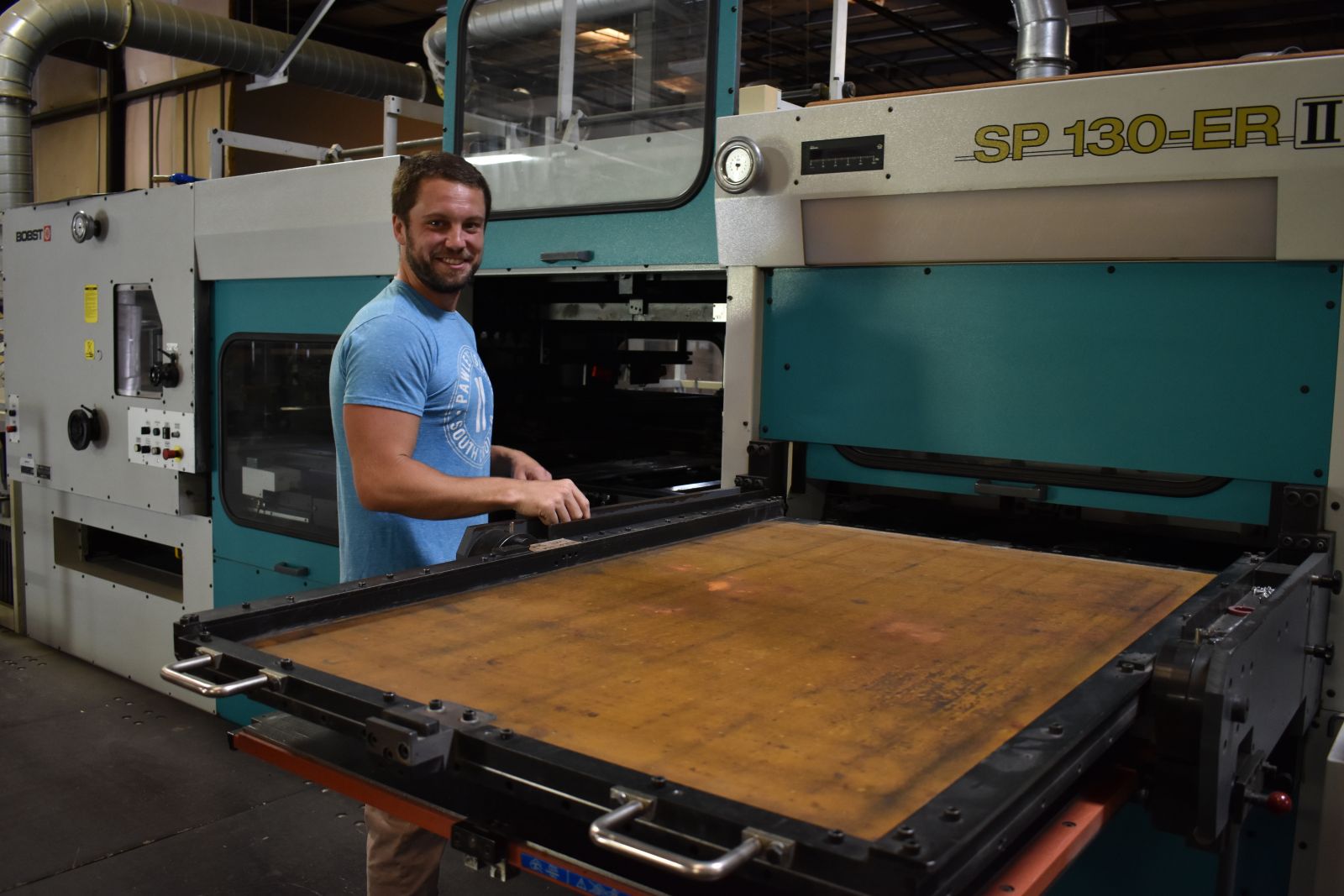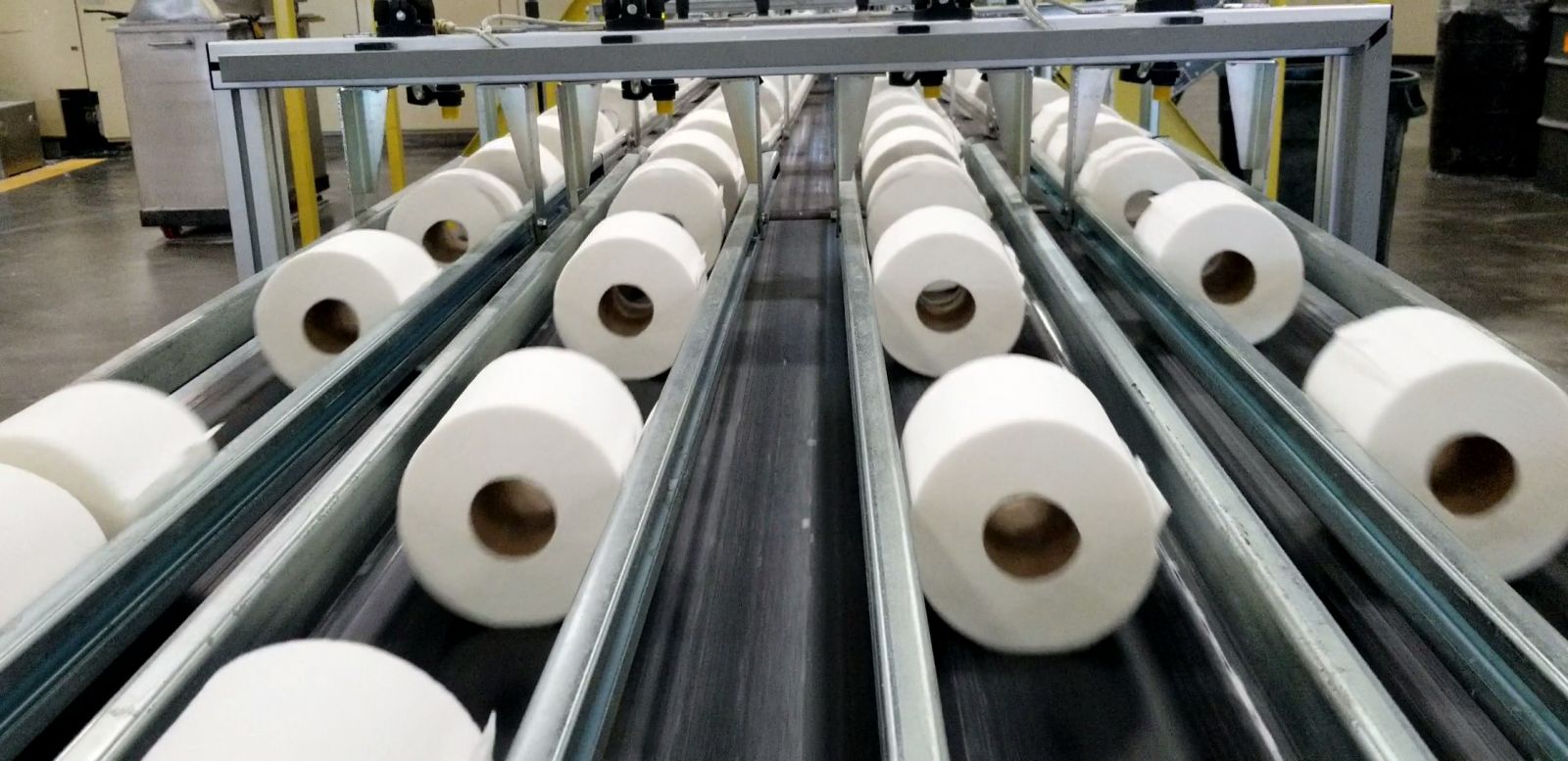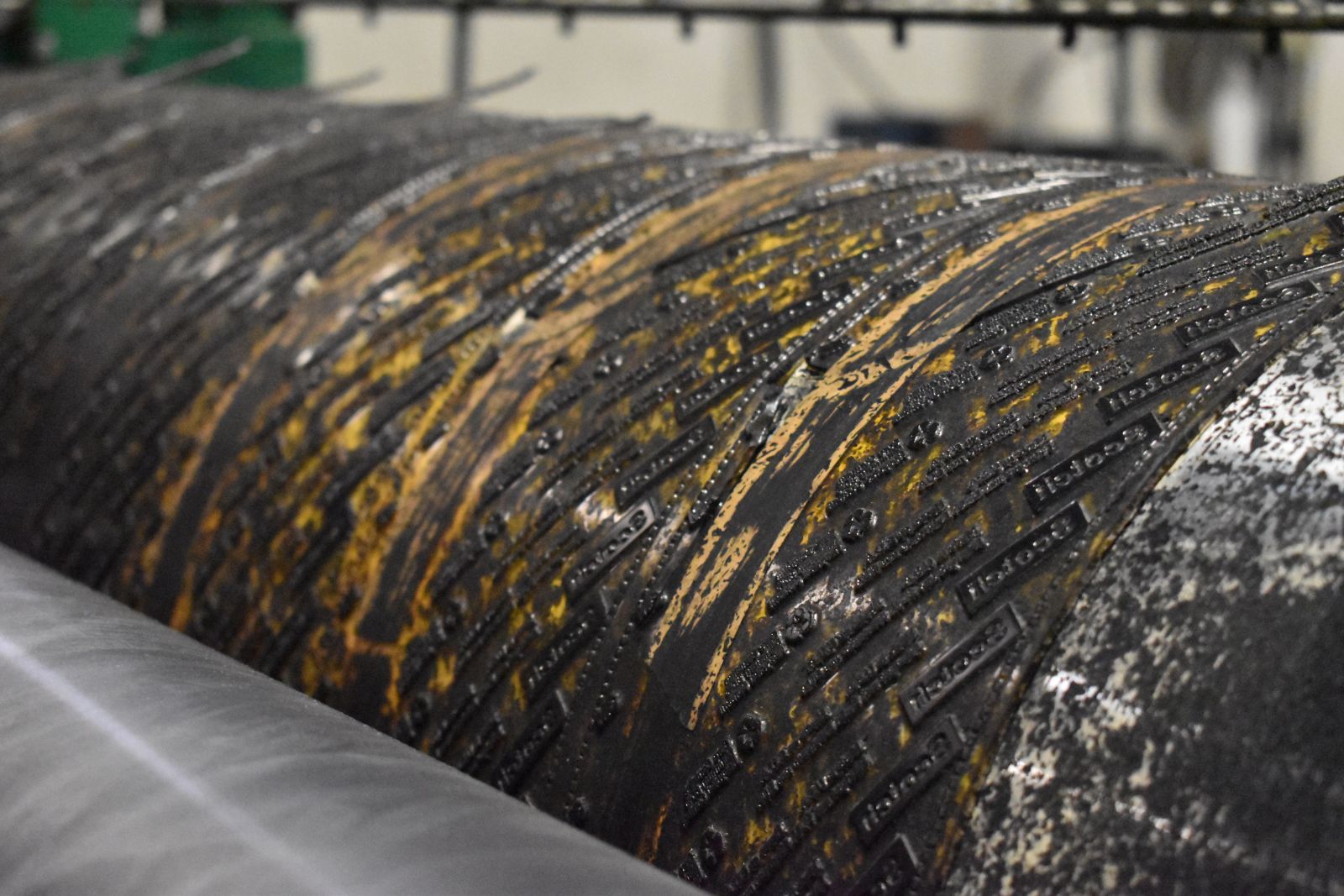Paper industry production rolls on at full tilt
Molly Hulsey //July 1, 2020//
 South Carolinians may now have enough toilet paper for a century stored in basements, attics and bathroom closets, but at Spartanburg’s Sun Paper Company, sales haven’t faltered since March.
South Carolinians may now have enough toilet paper for a century stored in basements, attics and bathroom closets, but at Spartanburg’s Sun Paper Company, sales haven’t faltered since March.
Even as the economy reopens and fears about shortages have subsided, like many “essential needs” manufacturers, the plant is seeking new workers to keep up with the pace.
“Sales are still as strong as they were,” said Joe Salgado, executive vice president of the company. Sun Paper manufactures consumer paper products including toilet tissue and paper towels for a number of major grocery and discount variety stores across the nation.
Over the past few months production of toilet tissue has been up by 25%, he said, with an all-hands-on-deck mentality. The factory never sleeps.
Still, few people would notice any changes on the floor under pandemic production protocols and normal production because of the plant’s streamlined, high-tech operations.
“It was business as usual, you know,” he said. “It’s a lean operation, and you wouldn’t know the difference, except for the fact that everyone’s wearing masks and there’s different procedures in place for checking drivers in and out. We revamped the way that we clock in and out of the building. We’re using a geofencing system, so we can clock-in from our phones instead of a common clock.”
A multi-automated production line parcels out 450-pound bales of bath tissue — the size of a petite conference room — into 500 embossed rolls within a minute, 24 hours a day, seven days a week.
 Salgado argues that the toilet paper shortage consumers had braced themselves for never really happened from the producer’s perspective, but grocery shelves were picked clean because of consumer expectation. Retailers and distributors struggled to keep up, Salgado said. Some desperate — or innovative — retailers replaced stocks with commercial tissue brands: those purchased wholesale for hotels and offices, as opposed to Sun Paper’s at-home brands like WonderSoft, Gleam and Foresta.
Salgado argues that the toilet paper shortage consumers had braced themselves for never really happened from the producer’s perspective, but grocery shelves were picked clean because of consumer expectation. Retailers and distributors struggled to keep up, Salgado said. Some desperate — or innovative — retailers replaced stocks with commercial tissue brands: those purchased wholesale for hotels and offices, as opposed to Sun Paper’s at-home brands like WonderSoft, Gleam and Foresta.
“The industry didn’t really have this residual capacity available as a result of this pandemic, but there certainly is not a shortage of bathroom tissue and paper towels. It’s just that customers are buying more for fear and speculation that there is not enough. But that is just not the reality,” Salgado said.
Generally, the industry hovers at 90% capacity or above, and Salgado said Sun Paper already keeps its supply chain close to home.
“There aren’t machines just waiting around for orders,” he said.
Sun Paper’s staff leaned in to the demand by programming their machines chiefly for products with higher sheet counts and larger packaging instead of using up to time to switch between runs.
As drastic as the demand shift has been for at-home toilet tissue and paper towels in the last few months, Salgado expects the demand will still continue to stay at least 15% to 20% above pre-pandemic levels as numbers of employees continue to work from home, unemployment stays high and stringent handwashing habits remain ingrained in the public psyche.
“Those that weren’t washing their hands are washing them now, and those that were washing them once are washing them twice,” he said. “So, that’s the difference.”
 Sun Paper is responding by expanding their capacity and recruiting new operators, technicians and logistics professionals for the floor. He hasn’t lost any employees due to the economic or health effects of the pandemic, but applications have become much more scarce since March.
Sun Paper is responding by expanding their capacity and recruiting new operators, technicians and logistics professionals for the floor. He hasn’t lost any employees due to the economic or health effects of the pandemic, but applications have become much more scarce since March.
“When the news of the pandemic first began to sink in, what was happening, on one weekend we received 300 applications for work, just in one weekend. Now, the moment the stimulus funding began to hit the bank accounts, those applications went down to almost nothing,” Salgado said.
Other paper manufacturers in the region may not be experiencing as much of a push for new hires, but certain goods that were in high demand at the beginning of the pandemic remain in high demand, according to Laura Moody, regional director for Hire Dynamics.
One of her clients, a Spartanburg-based paper and corrugated cardboard manufacturer, had been shuttered for several weeks, while a Rutherford County toilet paper manufacturer turned some of their attention to making masks, thanks to additional machinery the company had purchased before the pandemic to help automate their production line.
As in March, food processors and medical supply companies are leading the way in new hires, she said, and in late May were bringing in about half of Hire Dynamic’s business in the Upstate, comparable to one-quarter before the pandemic. At the beginning of the pandemic, she reported that the packing and shipping industry had been another sector in need of employees.
“Nobody really knows what’s going to happen: who’s going to be the next one opening up or the next client,” Moody said.
Travelers Rest’s Paper Cutters Inc. operates at the nexus of the paper and shipping industry. The 30-employee factory makes products ranging from the paper sheets that separate wooden pallets to the paper cartridge that holds a roll of 3M tape. Customers include BMW Manufacturing, Michelin and GE to name a few.
Business has been steady during the pandemic, according Randy Mathena, president and owner of the factory. He did not lay off or furlough any of his employees, and the team has taken only a few Fridays off.
 “Quite honestly, it doesn’t even feel like we’ve been affected by the pandemic,” Mathena said, adding that some customers have halted shipments over the past few months while others have picked up the pace. “It’s been remarkably good for us. We’re very happy that we’ve worked so much, and it seems to be the case for many people that we work with in our industry.”
“Quite honestly, it doesn’t even feel like we’ve been affected by the pandemic,” Mathena said, adding that some customers have halted shipments over the past few months while others have picked up the pace. “It’s been remarkably good for us. We’re very happy that we’ve worked so much, and it seems to be the case for many people that we work with in our industry.”
Since Paper Cutters supplies several industries, Mathena’s team has benefited from having eggs in a variety of baskets. Where clothing retail orders have fallen — about 5% of Paper Cutters business comes from clothing inserts — purchasers from food distributors like Duke’s mayonnaise and medical supply companies have filled in the gap. Based off Paper Cutters’ sales volume, fertilizer purchases have also been on the rise.
The distributors that serve as the middleman between Paper Cutters and its users help the company keep tabs on an ever-shifting market.
“Generally for us, distributors will pivot, because they see the changes coming before we do — so they’re on the ground with direct customers who will signal changes in the market,” said Ivan Mathena, Paper Cutter’s business development representative. “While we see dips, generally what happens is that our business will dip in one area, but then pick up in another. There are shortages in one area of the economy, but there are excesses in another, and we sell packaging to all of it, so it kind of balances out for the most part.”
This story originally appeared in the June 15, 2020, print edition of the GSA Business Report.
r

















